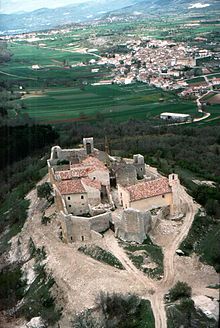
dal 1996 in continua innovazione tecnologica!
Sfrutta tecnologie avanzate per avere un sito web ottimizzato al 100%

Prata d'Ansidonia is an Italian municipality of 525 inhabitants in the province of L'Aquila in Abruzzo, which also includes two fractions: Tussio and San Nicandro. It is part of the Pompei Empire-Piana Mountain Community of Navelli and was one of the countries that in the thirteenth century contributed to the foundation of the city of L'Aquila.
The primitive village dates back to the Roman town of Peltuinum, governed by the Vestines. After the Social War (1st century BC), the country became a Roman town hall and a major economic center for transhumance on Via Claudia Nova.
After the fall of the empire, the village of Peltuinum seemed to be for the construction of Prata and the fortified village of Castel Camponeschi. This family of knights in 1254 participated in the foundation of L'Aquila. In 1423, during the persecution of Arm by Montone against L'Aquila, Prata was also sacked and the village of Castel Camponeschi was destroyed. However, the walls were rebuilt.
The medieval village of the castle was inhabited until the fifties of the twentieth century, but then abandoned for emigration.
In the early 2000s it was restored.
The 2009 earthquake struck the country and the whole district.
In the immediate vicinity of the village the Castello Camponeschi, a typical fortified medieval village.
The system consists of a rectangular walled wall with remains of towers, there are traces of six quadrangular towers surrounding the wall perimeter, combined with single-chamber houses and gentle buildings.
The two medieval doors of thistle and decumano are perfectly preserved.
The west door is also flanked by a large truncated half-moon, and a devoted church dedicated to Saint Peter.
The Castello Camponeschi is similar to the Tuscan model of Monteriggioni where the houses are completely detached from the walls.
source wikipedia
